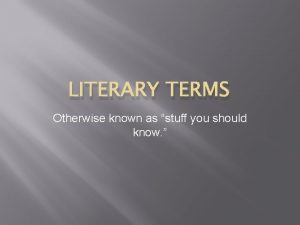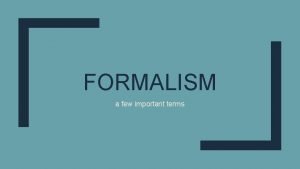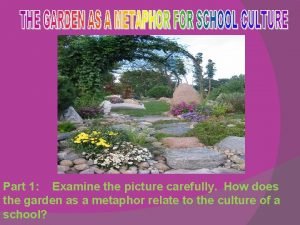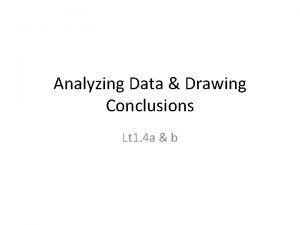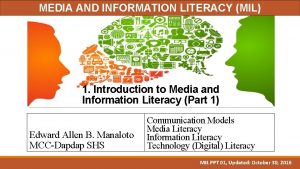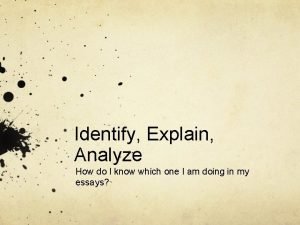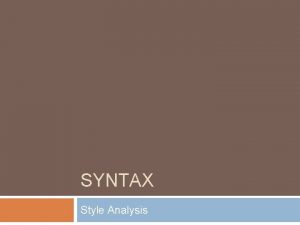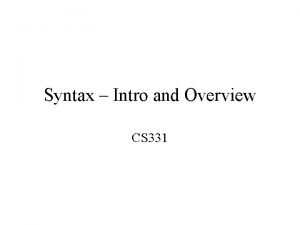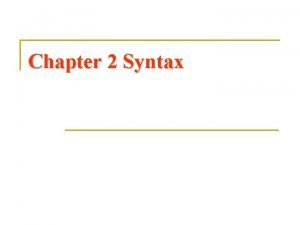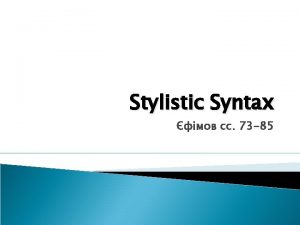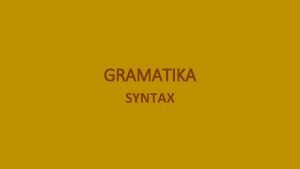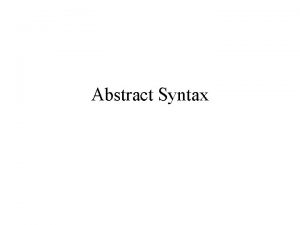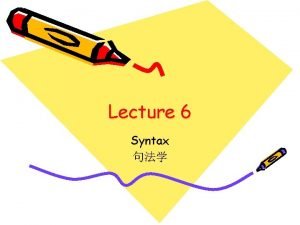Lesson 4 Juxtaposition and Syntax I can analyze












- Slides: 12

Lesson 4: Juxtaposition and Syntax I can analyze how an author’s syntax and juxtaposition creates a rhetorical effect. RI. 3 – Analyze a complex set of ideas or sequence of events and explain how specific individuals, ideas, or events interact and develop over the course of the text. RL. 5 – Analyze how an author’s choices concerning how to structure specific parts of a text contribute to its overall structure and meaning as well as aesthetic impact. L. 3 a – Apply an understanding of syntax to the study of complex texts when reading.

Agenda Juxtaposition Notes Overview of Syntax Practice Kahoot! Analysis of TTTC: “Spin” Formative Assessment: Sentence Type Quiz Homework: Read – Enemies, Friends, How to Tell a True War Story

Rhetorical Mode: Compare/Contrast is a rhetorical mode in which the similarities and differences between two or more ideas are explored to present an argument. Juxtaposition: placing two ideas, events, characters, images, etc next to each other in order to highlight the differences between them.

Juxtaposition

Juxtaposition

Syntax Definition: The grammatical structure of prose or poetry. The deliberate sentence structure the author chooses to make his or her desire point. In order to analyze an author’s syntax, you must be familiar with: Purposes of Sentence: Declarative, Parts Interrogative Imperative, Exclamatory of Sentences: Phrase and Clause Sentence Simple Structures/Types: vs. Compound Vs. Complex vs. Compound. Complex, Cumulative (Loose), Periodic

Purposes of Sentence Declarative Ex: sentence: makes a statement Fire is necessary for survival. Interrogative Ex: sentence: asks a question Is that on fire? Imperative sentence: gives a command, and often utilizes the understood “You” as subject Ex: Call the fire department. Exclamatory Ex: sentence: expresses strong emotion My house is on fire!

Last one! Sentence Type: A balanced sentence is made up of two parts that are roughly equal in length, importance, and grammatical structure: a paired, parallel construction. Ex. Beauty without grace is the hook without the bait.

Let’s Practice Kahoot! https: //play. kahoot. it/#/k/baee 4065 -008 d 4830 -9 bc 7 -777298 e 1 f 704

Practice Identify and Analyze O’Brien’s use of Juxtaposition and Sentence Types in “Spin”- Pg. 30 -36

Sentence Types Quiz! Let’s test your knowledge of Sentence Types!

Read: “Enemies” “Friends” “How to Tell a True War Story” H O M E W O R K
 Diction analysis
Diction analysis Syntax directed definition
Syntax directed definition Lang tong explained
Lang tong explained Juxtaposition literary device
Juxtaposition literary device Parallelism and juxtaposition
Parallelism and juxtaposition Subject mil
Subject mil Study each picture carefully
Study each picture carefully Ability to read analyze evaluate and produce communication
Ability to read analyze evaluate and produce communication Programs that organize analyze and graph numerical data
Programs that organize analyze and graph numerical data Drawing conclusions from data
Drawing conclusions from data Formative assessment analyze and explain this illustration
Formative assessment analyze and explain this illustration Identify and analyze
Identify and analyze Analyze patterns and relationships
Analyze patterns and relationships



